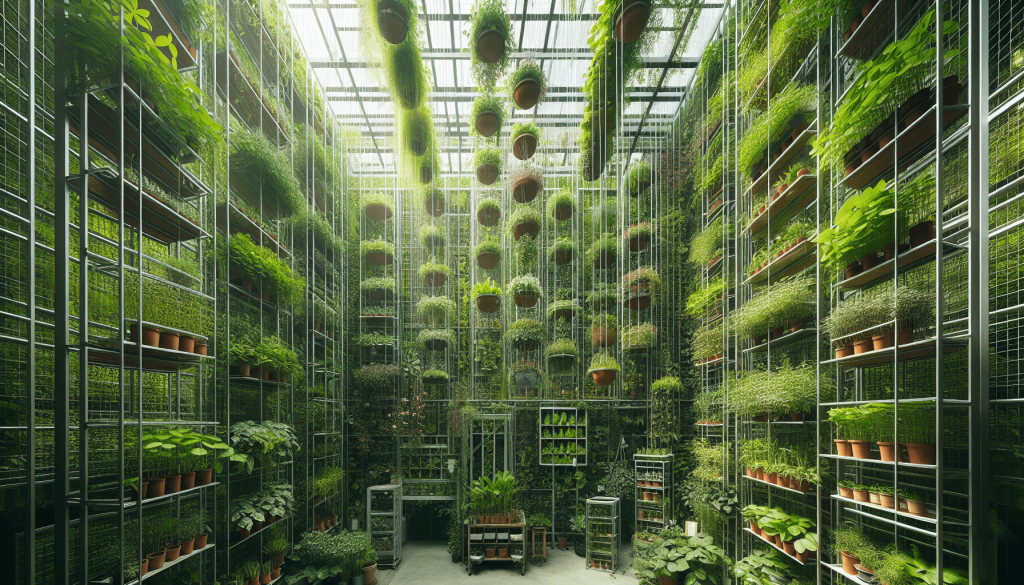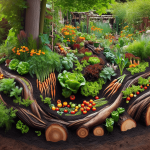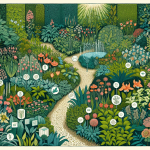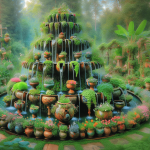This post may contain affiliate links. As an Amazon Associate, we may earn commissions from qualifying purchases.
Have you ever considered how you could make the most of the vertical space in your greenhouse? Whether you’re a seasoned gardener or new to the world of greenhouse cultivation, using the vertical plane can significantly increase your growing area and yield. Let’s explore some friendly advice on how to utilize vertical space effectively in your greenhouse.
Understanding Vertical Space in a Greenhouse
Vertical space is essentially the unused area between the floor and the roof of your greenhouse. Many gardeners focus solely on horizontal space, arranging plants side by side on the ground or low benches. But, why limit yourself? By thinking vertically, you can create multiple layers of growing space.
Why Consider Vertical Gardening?
Vertical gardening isn’t just about maximizing space; it’s also about improving airflow, reducing plant diseases, and making gardening tasks easier. Plus, it adds aesthetic value, transforming your greenhouse into a vibrant, lush haven.
Choosing the Right Structures
Using vertical space effectively requires the right structures to support your plants and tools. There are various options, from shelves to trellises, each serving different purposes in your greenhouse.
Shelving Units
Shelving is a straightforward way to stack plants, pots, and tools. Opt for adjustable shelves so you can customize the spacing to accommodate different plant heights.
| Type of Shelving | Pros | Cons |
|---|---|---|
| Metal Wire Shelves | Sturdy, good airflow | Can rust, heavy |
| Plastic Shelves | Lightweight, rust-proof | Less sturdy |
| Wooden Shelves | Natural look, can be custom-built | Can rot without proper treatment |
| Adjustable Shelves | Versatile and customizable | Typically more expensive |
Trellises and Lattices
Trellises allow climbing plants to grow upwards, making efficient use of space. They’re particularly useful for vining plants like tomatoes, cucumbers, and beans.
Hanging Systems
Hanging baskets and planters can turn empty airspace into productive growing areas. They’re perfect for trailing plants like strawberries and certain herbs.
Vertical Planters
These come in many forms, from pocket planters that hang on walls to tiered stacking systems. They’re excellent for growing herbs, small veggies, and flowers.
Selecting Suitable Plants
Not every plant adapts well to vertical growing conditions. It’s crucial to select varieties that naturally grow upwards or can be trained to do so.
Climbing Plants
Plants that climb or have vining tendencies are ideal for trellises. Consider the following:
- Tomatoes: Use tomato cages or stakes.
- Cucumbers: Train them to grow on trellises.
- Pole Beans: Perfect for vertical growth.
Trailing Plants
These are perfect for hanging baskets and planters. Some options include:
- Strawberries: Grow well in hanging containers.
- Herbs: Mint, oregano, and thyme.
- Flowers: Petunias and nasturtiums.
Compact Varieties
For shelves and vertical planters, look for compact or dwarf varieties that don’t require extensive root space:
- Lettuce: Grows well in tight spaces.
- Basil: Fits neatly into small planters.
- Radishes: Perfect for vertical growing systems.

Implementing Vertical Growth Techniques
Using vertical space effectively involves more than just picking plants and structures. You’ll also need to understand some specific techniques.
Training and Pruning
Training involves guiding plants to grow in desired patterns, often using ties or clips. Pruning is essential to maintain plant health and direct energy toward growth.
- Tomato Training: Use clips to attach stems to stakes or trellises.
- Cucumber Pruning: Remove lower leaves to improve airflow and reduce disease.
Staggering Planting Times
Staggering planting times ensures a continuous harvest and prevents overcrowding. Planting every couple of weeks means you can always replace harvested plants with new growth.
Companion Planting
Some plants benefit each other when grown together. For instance, beans fix nitrogen in the soil, which benefits leafy greens grown nearby.
Hydroponics and Aeroponics
These soilless growing systems can be quite effective vertically. Hydroponic towers, for instance, integrate plants on multiple levels, circulating water and nutrients efficiently.
Practical Considerations
When using vertical space in a greenhouse, there are practical aspects to consider.
Light Access
Ensure all plants get sufficient light. Top-tier plants shouldn’t overshadow lower tiers.
Watering Needs
Vertical arrangements can make watering tricky. Consider drip irrigation systems or self-watering planters to maintain consistent moisture levels.
Accessibility
While you might be tempted to utilize every inch of space, don’t make your greenhouse so crowded that you can’t move around or reach your plants.
Enhancing Aesthetics
Making your greenhouse visually appealing can make gardening even more enjoyable. Use colorful pots, mix flower varieties, or create eye-catching patterns with your plants.
Color Coordination
Choosing flowers and pots in coordinating colors can make your greenhouse a cheerful place. Play with contrasting or complementary color schemes for a vibrant look.
Vertical Gardens as Art
Think of your vertical garden as a living art installation. Arrange plants to create patterns or even abstract designs. Remember, it’s your space, so let creativity flourish.
Troubleshooting Common Problems
With any gardening technique, issues are bound to arise. Here are some common problems in vertical gardening and how to tackle them.
Pest Issues
Pests can become a problem in dense plantings. Use natural pest deterrents like neem oil or introduce beneficial insects such as ladybugs.
Overcrowding
Too many plants too close together can lead to disease. Regularly pruning and spacing plants can mitigate this issue.
Structural Failures
Ensure your supports and structures are strong enough to bear the weight of mature plants. Reinforce shelves and check trellis stability periodically.
Benefits of Vertical Gardening
There are numerous benefits to be reaped from vertical gardening.
Increased Yields
By maximizing space, you can grow more produce in the same footprint.
Improved Health
Better airflow reduces the risk of fungal diseases, and vertical arrangements can make harvesting and tending plants easier on your back and knees.
Enhanced Aesthetics
A well-planned vertical garden can be a real showstopper, turning your greenhouse into an oasis of green.
Final Words
Utilizing vertical space in a greenhouse is a game-changer. By choosing the right plants, structures, and techniques, you can transform your growing area, increase your yield, and create a beautiful, efficient space that brings you joy. Remember, gardening is as much about enjoying the process as it is about the final harvest. Happy growing!








